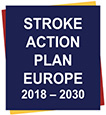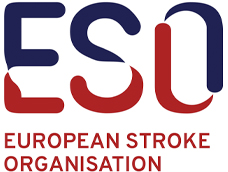This website uses cookies so that we can provide you with the best user experience possible. Cookie information is stored in your browser and performs functions such as recognising you when you return to our website and helping our team to understand which sections of the website you find most interesting and useful.
Rehabilitation

The United Nations Convention on the Rights of Persons with Disabilities (UNCRPD) includes the right to stroke rehabilitation
As stroke is the most common cause of new disability among adults, leading to more than one impairment that could affect daily activities, rehabilitation has been defined by the WHO as ‘a set of measures that assist individuals, who experience or are likely to experience disability, to achieve and maintain optimal functioning in interaction with their environments’.2
Rehabilitation includes occupational, physical, and speech and language therapy, with input from psychologists and social workers as necessary. It should involve a multidisciplinary approach from stroke physicians in a comprehensive stroke team, and an ordered plan for discharge from hospital with documented responsibility for continuing rehabilitation needs in the community.
It is instrumental in enabling people with functional limitations to remain in or return to their home or community, live independently and participate in education, work and civic life.
Good rehabilitation practice should include:
- Information for patients and their carers about stroke, rehabilitation and planned discharge and follow-up which in itself improves knowledge, patient satisfaction and reduces depression.
- Early supported discharge, mainly for people with mild to moderate stroke symptoms, where services are provided at home by a mobile rehabilitation team as part of the stroke treatment pathway.
- On-going and potentially increasingly intensive interventions – for patients with aphasia, for example, this can mean high-intensity training over a prolonged period.
- Training in Activities of Daily Living (ADL) which can be beneficial for up to a year after stroke.
- Training to improve the fitness and physical condition of the stroke survivor preferably with access to green spaces.
- Although the evidence of benefit from rehabilitation interventions after one year is sparse, it is important to recognise that improvement can continue for a long time after stroke,
- and that the patient’s needs will vary over time. Therefore, it is never too late for rehabilitation.

SAP-E Key Performance Indicators
Access to early stroke unit rehabilitation including early supported discharge (% access).
A binding personalised, documented rehabilitation and sector transition plan provided at the time of discharge (% patients provided with plan).
Further research and development priorities
- How can we efficiently implement long-term rehabilitation strategies, including measures such as ESD?
- How can we deliver more cost-effective long-term rehabilitation?
- Do self-management programmes improve long-term outcomes of stroke rehabilitation?
- How can rehabilitation be implemented with evidence-based results on timing, level and type of intervention?
- How can we improve participation and integration into society among stroke survivors?
Management of neurological deficits
- Can post-stroke fatigue be more effectively managed?
- Can post-stroke visual problems be more effectively managed?
- Can post-stroke language problems be more effectively managed?
- Can post-stroke cognitive impairment be more effectively managed?
- Can depression or anxiety be more effectively managed?
- Can post-stroke upper limb problems be more effectively managed?
- Can rehabilitation in an enriched environment improve outcome?
References
1. United Nations Division for Social Policy and Development. Convention on the Rights of Persons
with Disabilities (CRPD), www.un.org/development/desa/disabilities/convention-on-the-rights-of-personswith-disabilities.html (accessed 19 April 2018).
2. World Health Organization. World Report on Disability 2011. Geneva: World Health Organization, 2011. Rehabilitation. www.ncbi.nlm.nih.gov/books/NBK304081/ (accessed 19 April 2018).




